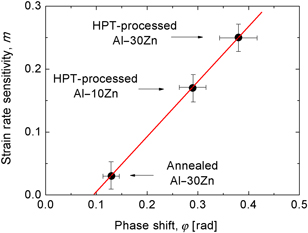Crossref Citations
This article has been cited by the following publications. This list is generated based on data provided by Crossref.
Olasz, Dániel
Lendvai, János
Szállás, Attila
Gulyás, Gábor
and
Chinh, Nguyen Q.
2020.
Extended Applications of the Depth-Sensing Indentation Method.
Micromachines,
Vol. 11,
Issue. 11,
p.
1023.
Chinh, Nguyen Q.
Szommer, Péter
Gubicza, Jenő
El-Tahawy, Moustafa
Bobruk, Elena V.
Murashkin, Maxim Yu.
and
Valiev, Ruslan Z.
2020.
Characterizing Microstructural and Mechanical Properties of Al–Zn Alloys Processed by High‐Pressure Torsion.
Advanced Engineering Materials,
Vol. 22,
Issue. 1,
Chen, Chen
Yu, Junjie
Lu, Jingyu
Zhang, Jian
Su, Xuan
Qian, Chen-Hao
Chen, Yulin
Ji, Weixi
and
Liu, Manping
2023.
Phase Transformation in Al/Zn Multilayers during Mechanical Alloying.
Acta Metallurgica Sinica (English Letters),
Vol. 36,
Issue. 10,
p.
1709.
Chinh, Nguyen Q.
Olasz, Dániel
Ahmed, Anwar Q.
Bobruk, Elena V.
and
Valiev, Ruslan Z.
2023.
Review on Grain Size- and Grain Boundary Phenomenon in Unusual Mechanical Behavior of Ultrafine-Grained Al Alloys.
MATERIALS TRANSACTIONS,
Vol. 64,
Issue. 8,
p.
1844.


